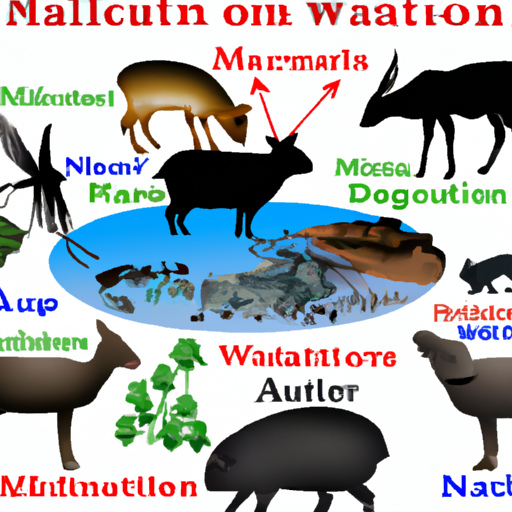 Introduction:
Introduction:
Water pollution is a significant environmental issue that poses severe threats to aquatic ecosystems and human health. While industrial and domestic waste are commonly recognized as major contributors to water pollution, the role of animals in this regard is often overlooked. Animals, both wild and domesticated, can significantly impact water bodies through their waste, agricultural practices, and natural behaviors. This article aims to explore the various ways in which animals affect water pollution, shedding light on the consequences for ecosystems and highlighting potential solutions.
1. Animal Waste:
Animal waste, particularly from intensive farming operations, is a significant source of water pollution. Livestock produces vast quantities of manure containing nutrients such as nitrogen and phosphorus. When this waste is not properly managed, it can find its way into nearby water bodies through runoff or leaching. Excessive nutrient levels in water can lead to eutrophication, causing algal blooms, oxygen depletion, and the death of aquatic organisms.
2. Agricultural Practices:
Agriculture is another sector where animals can indirectly contribute to water pollution. The use of fertilizers, pesticides, and herbicides in animal feed production can contaminate water bodies if not managed adequately. These chemicals can infiltrate the soil and reach groundwater or be carried away by runoff, eventually entering rivers, lakes, and oceans. The resulting contamination can harm aquatic life, disrupt ecosystems, and even pose risks to human health if drinking water sources become polluted.
3. Aquaculture:
Aquaculture, the farming of aquatic organisms, plays a significant role in the global food industry. However, this industry can also contribute to water pollution. Overcrowding of fish in aquaculture systems leads to a buildup of feces and uneaten feed, resulting in high concentrations of organic matter and nutrients in the surrounding water. Effluents from fish farms can introduce harmful substances, including antibiotics and chemicals used to control parasites, into water bodies, negatively impacting nearby ecosystems.
4. Aquatic Animal Waste:
While land-based animals contribute to water pollution through waste, aquatic animals also play a role. In natural ecosystems, fish and other aquatic organisms produce waste that contributes to the nutrient cycle. However, human activities such as overfishing, aquaculture, and the introduction of non-native species can disrupt this balance. Excessive waste from these activities can lead to imbalances in nutrient levels, potentially causing harmful algal blooms, oxygen depletion, and other ecological consequences.
5. Natural Animal Behaviors:
Apart from direct human activities, animals also impact water pollution through their natural behaviors. For example, large populations of waterfowl, such as geese or ducks, can contribute to nutrient loadings in water bodies due to their droppings. The accumulation of bird droppings in recreational areas or near water sources can introduce excessive nutrients, bacteria, and parasites, compromising water quality and human health.
Conclusion:
Animals, through their waste, agricultural practices, and natural behaviors, significantly contribute to water pollution. Uncontrolled release of animal waste, inadequate management of agricultural practices, and the environmental impacts of aquaculture can all lead to contamination of water bodies. Recognizing the role of animals in water pollution is crucial for developing sustainable practices that minimize their impact. Effective waste management strategies, responsible agricultural practices, and improved aquaculture systems are essential steps toward mitigating water pollution caused by animals, thus safeguarding the health of both ecosystems and human populations.
